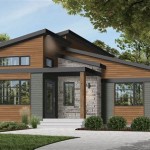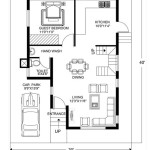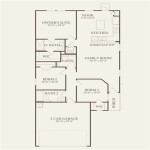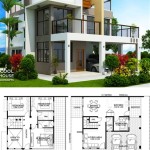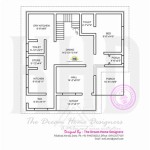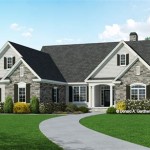Guinea Pig Hutch Plans: Building the Perfect Home for Your Cavy
Providing a safe and enriching environment is crucial for guinea pig well-being. A well-designed hutch plays a vital role in meeting these needs. While commercially available hutches exist, building a custom hutch allows for tailored size, features, and material selection, often at a lower cost. This article explores key considerations for guinea pig hutch plans, ensuring a comfortable and stimulating home for these small pets.
Size and Space Requirements
Guinea pigs require ample space to exercise, explore, and socialize. The hutch size should correlate with the number of guinea pigs housed. A minimum floor space of 7.5 square feet is recommended for two guinea pigs, with additional space for each additional cavy. Vertical space is less critical than horizontal space, but guinea pigs appreciate multi-level structures for exploration and hiding.
Material Selection
Choosing safe and durable materials is paramount for hutch construction. Untreated wood, such as kiln-dried pine or fir, is a popular choice for framing. Avoid cedar or pressure-treated lumber due to toxic phenols. Wire mesh is suitable for sides and tops for ventilation, ensuring the wire spacing is small enough to prevent escape. Solid flooring, such as plywood or PVC, is preferable to wire mesh for foot health.
Ventilation and Climate Control
Proper ventilation is essential to prevent respiratory issues and maintain a healthy hutch environment. The hutch should allow for adequate airflow while protecting guinea pigs from drafts and extreme temperatures. Open sides with wire mesh promote air circulation. In colder climates, consider incorporating a solid section for shelter and warmth.
Ease of Cleaning and Maintenance
Regular cleaning is vital for guinea pig health. The hutch design should facilitate easy access for cleaning and maintenance. Removable flooring or trays simplify cleaning processes. Smooth, non-porous surfaces are easier to disinfect and prevent bacterial growth. Consider incorporating a removable roof for easy access to the hutch interior.
Safety and Security
Protecting guinea pigs from predators and escape is crucial. Secure latches and sturdy construction are essential to prevent escape attempts. The hutch should be placed in a secure location, away from potential hazards such as electrical cords and toxic substances. If the hutch is outdoors, consider predator-proofing measures like wire mesh buried beneath the hutch perimeter.
Enrichment and Stimulation
A stimulating environment promotes guinea pig well-being and prevents boredom. Incorporate various features into the hutch design to encourage natural behaviors. Ramps, tunnels, hiding boxes, and chew toys provide opportunities for exploration, exercise, and mental stimulation. Rotate toys and rearrange the hutch layout periodically to maintain novelty.
Accessibility and Interaction
The hutch design should allow for easy access to the guinea pigs for interaction, feeding, and health checks. Large doors or removable sections facilitate handling and cleaning. Position the hutch at a comfortable height for interaction, avoiding placements that are too high or too low. Ensure adequate lighting within the hutch for observation and interaction.
Cost Considerations
Building a custom hutch can be a cost-effective alternative to purchasing a pre-made hutch. Planning the design and sourcing materials strategically can help minimize expenses. Utilizing recycled materials, such as repurposed furniture or salvaged wood, can further reduce costs. Compare the cost of materials and labor with commercially available options to determine the most economical approach.
Planning and Design Considerations
Before beginning construction, carefully plan the hutch design and dimensions. Sketching a blueprint or using design software can help visualize the layout and ensure the hutch meets the guinea pigs' needs. Consider the available space, materials, and budget when developing the plan. Consult reputable online resources or experienced guinea pig owners for design inspiration and guidance.
Building Process and Techniques
Once the plan is finalized, gather the necessary tools and materials. Follow safety precautions during the construction process. Ensure all connections are secure and stable. Sand down any rough edges or splinters to prevent injuries. Thoroughly clean the hutch before introducing the guinea pigs.

Two Tier Rabbit Guinea Pig Hutch Plans Assembly Instructions Comes With Cut List And Step By Guide

How To Build A Guinea Pig Hutch Buildeazy

How To Build A Guinea Pig Hutch Buildeazy

147 Deluxe 2 Y Rabbit Hutch Cage With Under Run Buy Small Animal Supplies Casas Para Cobayas Mascotas Gallinas

Build A Guinea Pig Cage With Easy Cleaning Projects Kids 4 Steps Instructables

Cage Designs Plans Guinea Pig Cages

Two Tier Rabbit Guinea Pig Hutch Plans Assembly Instructions Comes With Cut List And Step By Guide

How To Build A Guinea Pig Hutch Buildeazy

Make Your Own Guinea Pig Cage Tips Diy Hutch Pet Pigs

Rabbit Guinea Pig Hutch Plans Assembly Instructions Comes With Cut List And Step By Guide

